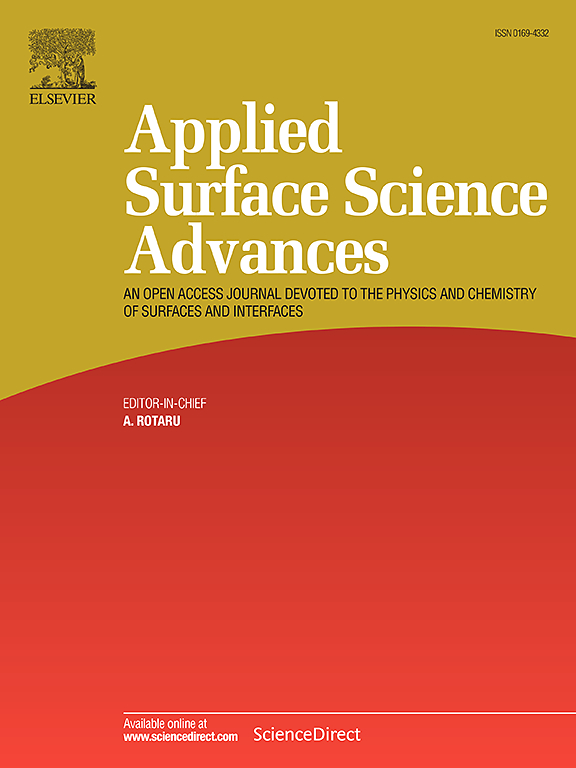Robust highly conductive patterns in flexible PEEK materials with either sp3 or sp2 dominant carbon phases produced by using ultrashort laser pulses
IF 7.5
Q1 CHEMISTRY, PHYSICAL
引用次数: 0
Abstract
This study reports ultrashort direct laser writing of highly conductive patterns on 50 µm thick flexible polyether-ether-ketone (PEEK) using two distinctive, electrically conductive regimes confirmed by XPS; an sp3-carbon dominant regime with minor sp2 contribution (Phase-I) and an sp2-carbon dominant regime with a small sp3 contribution (Phase-II). Phase-I is produced using a single laser scan strategy with a narrow fluence window. Phase-II is optimally produced using four sequential laser scan passes, each with a specific fluence. The rationale for the first pass was to disrupt carbon atoms, the second and third exposures were to gently modify this disrupted phase, and the fourth pass was to anneal the final structure. No characteristic graphene peaks were observed in Raman spectra for Phase-I, however, this phase surprisingly showed higher conductivity when compared with Phase-II. Raman peaks for graphene were observed for single laser scan passes at higher laser fluences with the onset of surface damage. In Phase-II, PEEK was laser scanned multiple times to transform into sp2 graphene integrated in the form of laser induced periodic surface structures. The lowest sheet resistance obtained was 9.60 Ω/□ and 11.53 Ω/□ corresponding to an electrical conductivity of ∼4.33 × 103 S/m and 4.17 × 103 S/m for Phase-I and Phase-II, respectively. The reported low-fluence process is significant for direct laser writing of conductive structures on polymers providing a precise and controlled manipulation of carbon configuration to produce components which are not impacted by mechanical friction.
利用超短激光脉冲在sp3或sp2碳相的柔性PEEK材料中产生坚固的高导电性图案
本研究报告了超短直接激光在50µm厚的柔性聚醚醚酮(PEEK)上书写高导电性图案,使用两种不同的导电体制,经XPS证实;sp3-碳为主体系,sp2贡献较小(相1),sp2-碳为主体系,sp3贡献较小(相2)。第一阶段是使用具有窄通量窗口的单一激光扫描策略产生的。第二阶段的最佳生产是使用四个连续的激光扫描通道,每个通道具有特定的影响。第一阶段的基本原理是破坏碳原子,第二和第三阶段的暴露是温和地修改这个被破坏的阶段,第四阶段是退火最终的结构。在第一相的拉曼光谱中没有观察到特征石墨烯峰,然而,与第二相相比,这一相令人惊讶地表现出更高的导电性。随着表面损伤的开始,在更高的激光影响下,单次激光扫描可以观察到石墨烯的拉曼峰。在第二阶段,PEEK被激光多次扫描,转化为sp2石墨烯,以激光诱导的周期性表面结构的形式集成。得到的最小薄片电阻为9.60 Ω/□和11.53 Ω/□,对应于第一阶段和第二阶段的电导率分别为~ 4.33 × 103 S/m和4.17 × 103 S/m。报道的低通量工艺对于在聚合物上直接激光书写导电结构具有重要意义,提供了对碳结构的精确和可控操纵,以生产不受机械摩擦影响的组件。
本文章由计算机程序翻译,如有差异,请以英文原文为准。
求助全文
约1分钟内获得全文
求助全文

 求助内容:
求助内容: 应助结果提醒方式:
应助结果提醒方式:


